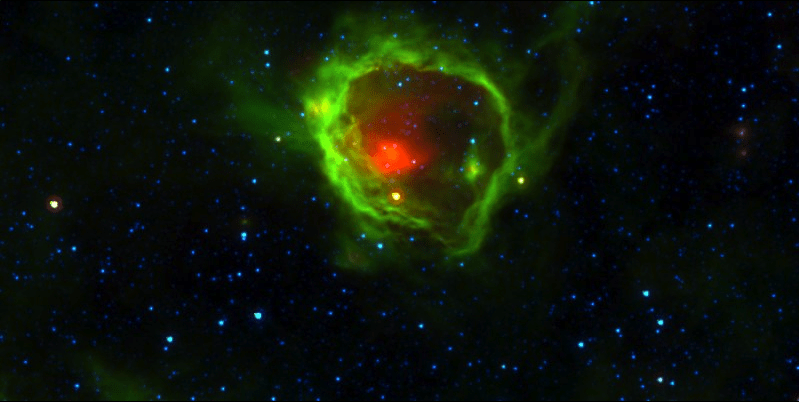[/caption]
Remember when you were a kid and blowing bubbles was such great fun? Well, stars kind of do that too. The “bubbles” are partial or complete rings of dust and gas that occur around young stars in active star-forming regions, known as stellar nurseries. So far, over 5,000 bubbles have been found, but there are many more out there awaiting discovery. Now there is a project that you can take part in yourself, to help find more of these intriguing objects.
The Milky Way Project, part of Zooniverse, has been cataloguing these cosmic bubbles thanks to assistance from the public, or “citizen scientists” – anyone can help by examining images from the Spitzer Space Telescope, specifically the Galactic Legacy Infrared Mid-Plane Survey Extraordinaire (GLIMPSE) and the Multiband Imaging Photometer for Spitzer Galactic Plane Survey (MIPSGAL).
They have been seen before, but now the task is to find as many as possible in the newer, high-resolution images from Spitzer. A previous catalogue of star bubbles in 2007 listed 269 of them. Four other researchers had found about 600 of them in 2006. Now they are being found by the thousands. As of now, the new catalogue lists 5,106 bubbles, after looking at almost half a million images so far. As it turns out, humans are more skilled at identifying them in the images than a computer algorithm would be. People are better at pattern recognition and then making a judgment based on the data as to what actually is a bubble and what isn’t.
The bubbles form around hot, young massive stars where it is thought that the intense light being emitted causes a shock wave, blowing out a space, or bubble, in the surrounding gas and dust.
Eli Bressert, of the European Southern Observatory and Milky Way Project team member, stated that our galaxy “is basically like champagne, there are so many bubbles.” He adds, “We thought we were going to be able to answer a lot of questions, but it’s going to be bringing us way more questions than answers right now. This is really starting something new in astronomy that we haven’t been able to do.”
There are currently about 35,000 volunteers in the project; if you would like to take part, you can go to The Milky Way Project for more information.


Well, I sometimes wonder about that whenever I hear/read of a pious person seeing yet another image of Jesus/Mary in an oil stain or on a piece of toast!